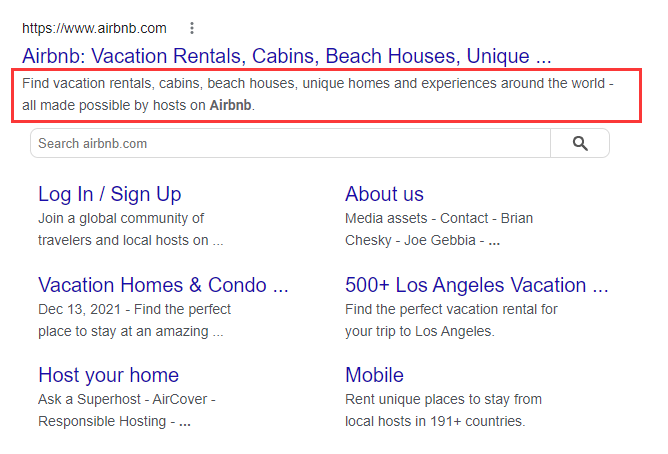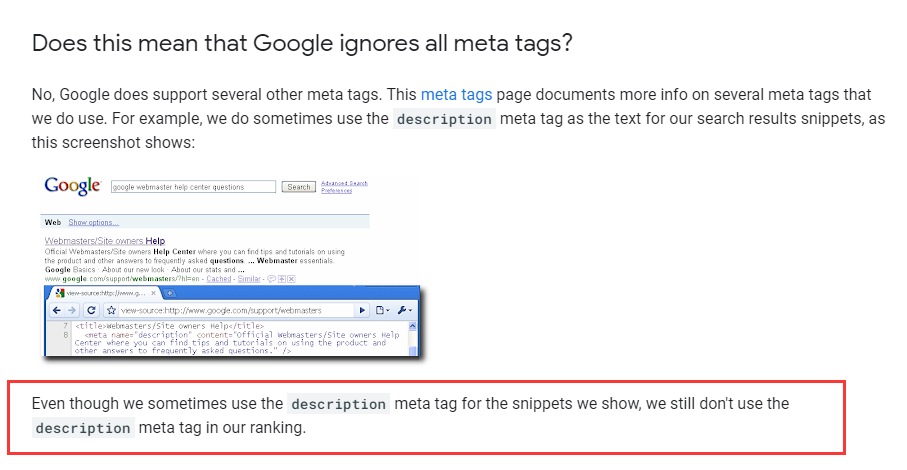How to Write the Right SEO Meta Description to Improve CTR
If you’re looking to improve the CTR of your post in the search results, well-written meta description might be quite useful.
This article will cover everything you need to know about meta description. We will talk about what they are, why they are important, the best length for your meta descriptions, and finally how to write a good meta description.
let’s start with the basics…

Contents
What Is a Meta Description?
A meta description is a piece of HTML on your webpage that provides a brief summary of a web page. This snippet appears below the title tag in the search results and is meant to give the user an idea of the content that exists within the page and how it relates to their search query.
Although not a direct ranking factor, meta descriptions do impact CTR which is a direct ranking factor, so it is crucial to have optimized meta descriptions on your site.
Meta Description Examples
Examples of Meta Descriptions in HTML Code
Meta tags should appear at the top of your HTML, or in the <head> section. For example:
<html>
<head>
<title>...</title>
<meta name="description" content="I am a fantastic meta description." />
...
</head>
...
</html>
You can find the meta description on any web page by right-clicking on the page and selecting “view source” or “view page source”:
Examples of Meta Descriptions in Search Results
The meta description also appears as part of the SERP snippet. Here are a few meta description examples from highly-ranking search results.


Why Are Meta Descriptions Important for SEO?
First, we need to make it clear that meta descriptions cannot affect your rankings. Google announced in September of 2009 that neither meta descriptions nor meta keywords factor into Google’s ranking algorithms for web search.
Even though we sometimes use the description meta tag for the snippets we show; we still don’t use the description meta tag in our ranking.

The meta description can, however, impact a page’s click-through rate (CTR) in Google SERPs, which can positively impact a page’s ability to rank.
When the page appears on the SERP, users will scan it to see if it answers their query. A quality description can positively impact the number of people who click through your site. Besides, keywords are bolded in the snippet while displaying on the SERP, and a user looking for information will likely pay attention to them. In turn, these can raise your traffic and engagement, improving your rankings in the SERP.
Meta descriptions also appear in social media under the link to the web page. This is an additional opportunity to convince users to click your post. Read more about this in the article Open Graph Meta Tags.
Therefore, a well-written, compelling or provoking meta description is very important for “promoting” your content. Don’t write it arbitrarily or thoughtlessly!
How Long Should Your Meta Description Be?
The meta description is a very brief description of a page or site and can be named a so-called business card for the SERP. How long should a meta description be?
Google displays meta description lengths based on pixels, so be aware of this specification for your meta descriptions’ appearance on the SERPs. The limit on desktop is 920 pixels, which is roughly 158 characters, and 680 pixels on mobile, which is roughly 120 characters.
Of course, each character varies in pixel width, so the number of characters used is not an absolute, whereas pixel width is.
It is important to stay within the character limit on the meta description length to avoid having part of your description get cut off by the search engine and appear incomplete in the SERP.
How to Write Good Meta Descriptions
Now you’re ready to start creating your powerful meta descriptions — congratulations!
Whether you’re already a skilled SEO writer or a newbie, you’ll learn the best meta description writing techniques in this part.
Let’s check.
Why Won’t Google Use My Meta Description?
Google won’t always display your handwritten description in search results, and may choose to pull another snippet of text from the rest of your content, should they feel it better matches the search query.
It’s hard to predict exactly when this will happen, but it often occurs when Google doesn’t think the existing meta description adequately answers a user’s query and instead uses a bit of text from the same page that it believes is a more accurate or compelling response to the search.
This can be frustrating, especially when you’ve spent time carefully crafting unique descriptions for each page, but that frustration can be avoided in some cases. there are things you can do to improve the odds that Google will use your meta description. Here they are:
- Make sure your meta description fall within Google’s length requirements.
- Make sure your meta description accurately reflect what’s on your page.
- Make sure you only have one instance of meta description on your page.
1. Include Your Target Keyword
When talking about how to write a meta description for SEO, it is worth mentioning the use of keywords.
As we already mentioned, Google bolds keywords making them more noticeable for users. If you use relevant keywords, the snippet will correspond to users’ requests. It is crucial that keywords are naturally and logically written in the sentence, without overloading the short text.

2. Get Inspiration from Google Ads
Google Ads can be a great source of ideas for ways to further optimize your meta descriptions.
The placement of Google Ads is based on how much advertisers and the Quality Score. And the click through rate is the #1 factor that impacts Quality Score. So when you see an ad in the search results, you can be SUPER confident that it has a high CTR.
What you need to do is to learn from these ads’ copies.
3. Show Your Selling Point
The messaging used in meta description should show your “selling point”. Here’s a quick rundown of the major types of selling point copy approaches:
- Features: highlighting the physical or intangible aspects of the product/service.
- Benefits: calling out the positive outcomes the visitor will have from the product/service.
- Problem: focus on the actual issue at hand to relate to the problem the visitor is trying to solve.
- Solution: focus on the solution to the problem the visitor is facing.
- Testimonials: using actual feedback/testimonials to leverage social proof.
- Reviews: third-party reviews of the product/service, not from customers.
- Top of the Class: calling out any awards, ratings, etc. to show you’re the best.
4. Take Advantage of CTAs
It’s a great idea to include a CTA (Call To Action) in your meta description. At the end of your description, you can add “Find out more” / “Learn more” / “Discover more” or any other incentive to boost clicks. At the same time, be careful not to sound like sales spam.
5. Ensure Your Meta Descriptions Are Relevant
No matter what meta description is used, it’s important that the message and offer follow through to the landing page for a cohesive experience.
When meta descriptions have nothing to do with the content and have been written only to trick users, they won’t lead to the desired outcome.
6. Choose The Optimum Length
Limiting the length helps ensure that the description is not cut off so users can see everything you write. So we suggest writing meta description to up to a character limit between 120 and 155.
7. Keep Your Meta Descriptions Unique
Use unique Meta descriptions for all pages across a website. Each page on a site is different; and because the Meta descriptions should accurately reflect the content of each page, they should all be unique.
It’s Time to Review and Improve Your SEO Meta Descriptions
Although Google claims meta descriptions don’t impact search engine rankings, they are still important to your website from an on-site SEO point of view.
Now, it’s time to review and improve your SEO meta descriptions.
If you run a big site, you’d better use a website audit tool to tell you wherever the descriptions are missing, the descriptions are too long (or short), and the descriptions are duplicated.
Then, rewrite the meta description. Here are all the steps to writing good meta descriptions:
- Include your target keyword
- Get inspiration from google ads
- Show your selling point
- Take advantage of CTAs
- Ensure your meta descriptions are relevant
- Choose the optimum length
- Keep your meta descriptions unique
The more you write, the easier it will be to mentally go through these checklists and know when your meta description is optimized.
